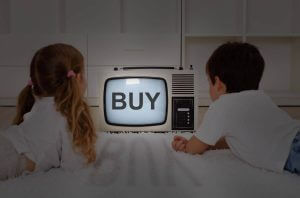
Human behavior, personalities and thinking patterns are influenced by the surrounding environment and the information present. Social media has become a very large part of the environment and information is just a click away. With social media, people are able to interact all over the world, learn different ideologies and form diverse opinions on different issues. Social media influences political opinions, tastes and preferences and cultural standings among other important aspects of the human being.
When it comes to pushing ideas and perspectices social media has become the most effective way to disseminate and measure efficacy. Since we’re all plugged in with our devices, it is faster and easier to reach a wide audience at the tap of a button than it has ever been in the history of communications and human existence. Depending on how a communications operation is packaged, one is able to sway opinions and affect outcomes to a desired direction in order to meet a target objective.
How is social media Influencing our Opinions?
The advancement of technology over the last few years has had a great impact on the way we get information. Social media has connected the entire world and made it a global village. We have advanced from getting information in intervals to having a 24hour access. The media has become a tool to control opinions and influence perspectives on different issues.
People are influenced to take different political stands, religious opinions, social interactions and economic engagements through social media. Most of our opinions today come from a perspective we have picked from social sites and even digital adverts. In one way, humans are losing their independent thought process and relying so much on others’ opinions but in another aspect, our thinking capacity has been challenged and expanded to have a global reasoning perspective.
Does social media have an impact in our Society?
Social media definitely has a great impact in our society. People are able to connect and build strong relationships as well as have a voice on different social issues. We can now shop at the convenience of our homes and promote different businesses that otherwise may remain undiscovered.
Social Media has also had a negative impact on some level as it encourages vices such as bullying, spreading of false information and the spread of hatred between different groups due to differences in opinions. It is therefore an individual responsibility to choose how they would like to be impacted by social media and control the narrative.
What will social media be in the future?
Given the rapid expansion in technology and increased reliance on the use of social media to pass information, there really is no telling about the magnitude of explosion that can happen in the next few years. We can however have a look at some of the changes that can be expected when it comes to the social media of the future.
- Commerce – As we are already experiencing, most businesses are moving towards E-Commerce in a bid to boost their social reach. In the future this will be the way for business to grow as physical stores shrink. Consumers love the convenience of getting goods and services at the tap of a button at their own convenience and so in the future we can expect massive growth in social commerce.
- News – With the ease of access to global news, we can expect people to be more informed on the happenings around the globe and form strong opinions on issues. Unfortunately, we also expect to see an increase in the spread of false information, popularly known as fake news. Media and other different social groups are increasingly spreading misleading information to sway opinions and we shouldn’t expect anything different in the future. The best we can do is take responsibility for verifying information before spreading it or forming opinions around it.
- Product Discovery – social media will aid greatly in the discovery of products within the marketplace. With the touch of a button, people access videos, photos and messages, all which convey information about a wide range of solutions in the marketplace. Brands will also rely more on the social space to collect data on likes and preferences so as to bridge any gap in the consumer space while improving on their existing products.
- Social Sites Growth – As it is, there are millions of new users that join social platforms on a daily basis. We can expect this growth to continue in the future and thus there is room for the development of new social sites that offer different experiences than we are used to. The existing sites such as Facebook will also see changes that allow them to compete in the changing space of social media.
How can I use social media Responsibly?
The social media space operates on the “willing seller, willing buyer” notion. Everyone is free to join any platform, share their opinions and ideologies and leave whenever they want. There has been abuse of the social media space especially because everyone is technically faceless. This abuse has had adverse effects on others such as rising suicide cases, tarnishing brands and swaying of public opinions negatively.
As an individual, one should be intentional on the way they use different platforms by taking the following steps;
- Aim at verifying information before adopting it as the gospel truth and forming opinions around it.
- Avoid imposing your opinions on others while downplaying their point of view.
- You should not spread fake news just for the sake of gaining popularity on social media.
- Do not spend a lot of your time on social media.
- Purpose to form healthy physical connections and not just social ones. Humans have been found to become very lonely and isolated in real life but very connected in the virtual space.
- Be courteous and mindful of what you post or comments made to avoid the rising cases of social media bullying. Always choose to be the bigger person.












